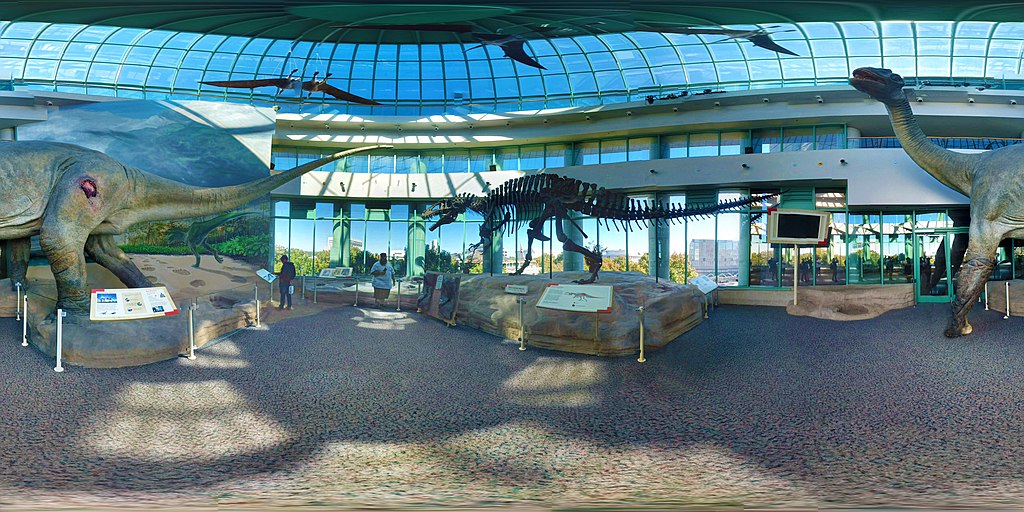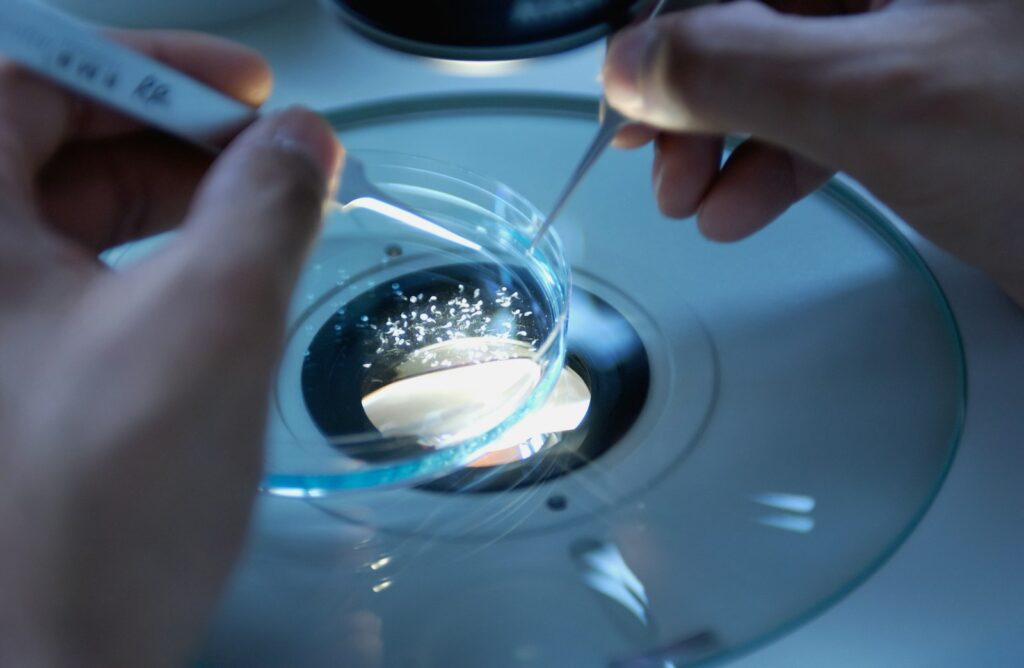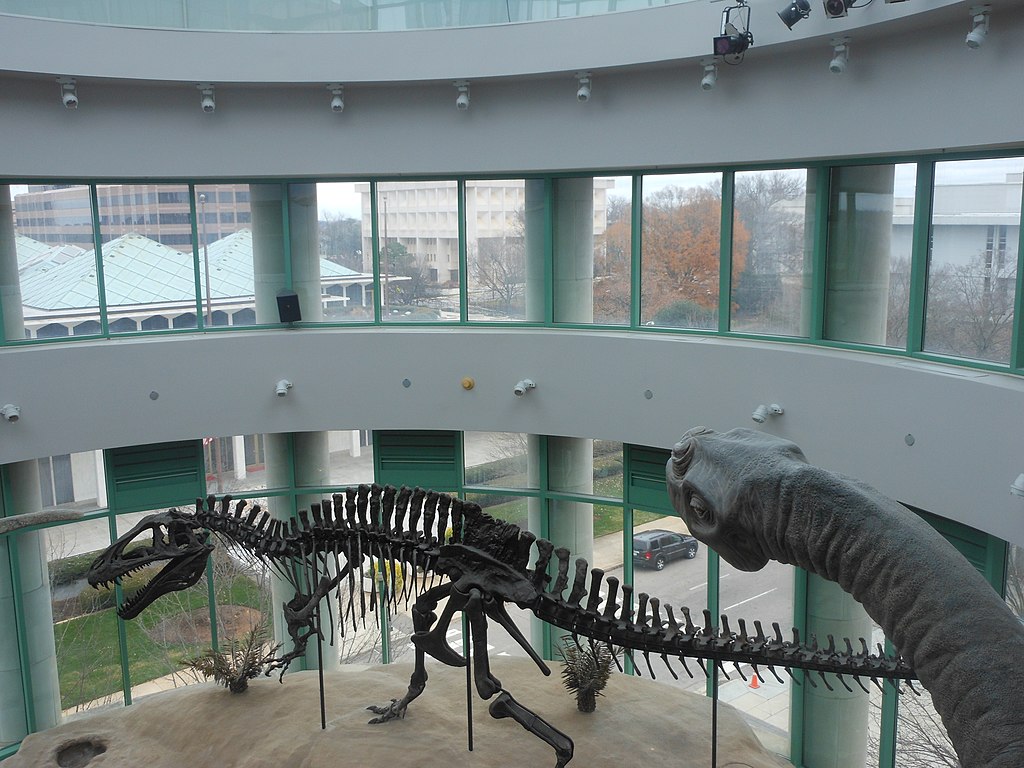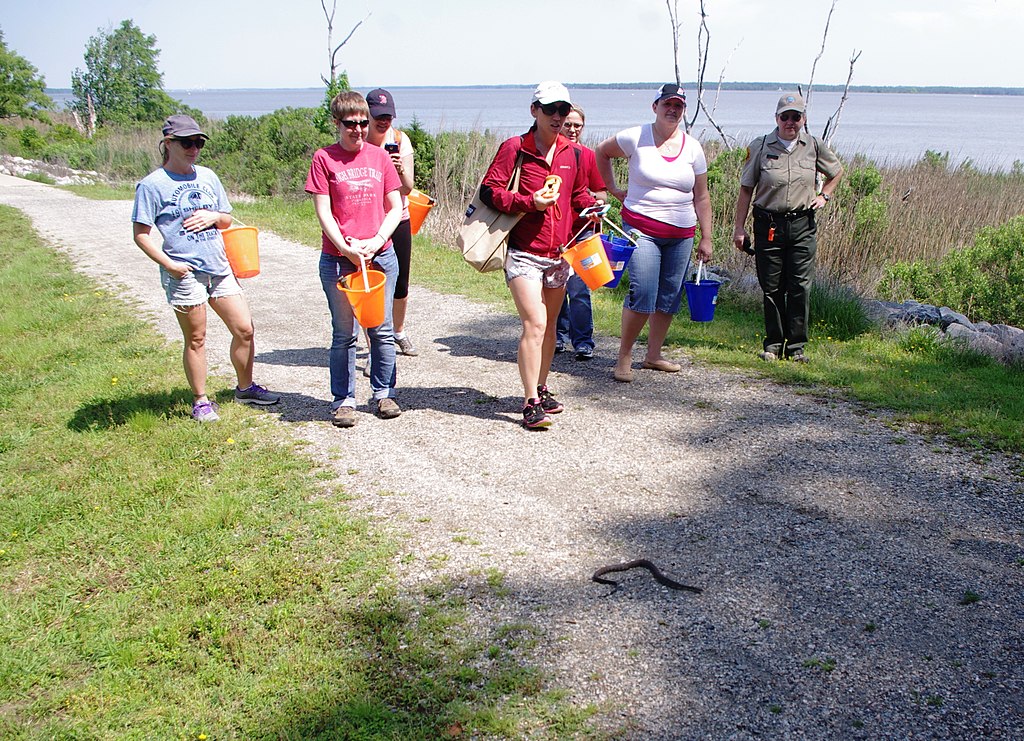Dr. Lindsay Zanno stands as a remarkable figure in the world of paleontology, skillfully navigating the complex terrain between rigorous scientific research and engaging public outreach. As a paleontologist and Head of Paleontology at the North Carolina Museum of Natural Sciences, as well as an associate research professor at North Carolina State University, Dr. Zanno has dedicated her career to uncovering the mysteries of prehistoric life while simultaneously making these discoveries accessible to the public. Her work primarily focuses on theropod dinosaurs, especially the evolution of early bird-like dinosaurs, but her impact extends far beyond these specific research interests. This article explores how Dr. Zanno successfully balances her roles as a scientist, educator, and public figure, serving as an inspiring model for how modern scientists can bridge the gap between specialized research and broader societal engagement.
Early Life and Academic Journey

Dr. Lindsay Zanno’s path to becoming a renowned paleontologist began with a childhood fascination with the natural world and prehistoric life. Like many scientists, her early curiosity about dinosaurs and ancient ecosystems sparked a lifelong pursuit of knowledge. She completed her undergraduate studies before pursuing advanced degrees in paleontology, eventually earning her Ph.D. with research focused on theropod dinosaurs. Her academic journey was characterized by persistence and dedication, qualities that would later serve her well in both field expeditions and laboratory work. Unlike some scientists who choose to focus exclusively on research, Zanno recognized early on the importance of communicating science to the public and integrated this awareness into her professional development. This dual focus on research excellence and communication skills set the foundation for her unique career trajectory that would eventually position her as a leader in both scientific discovery and science outreach.
Research Focus: Theropod Dinosaurs and Early Birds

At the core of Dr. Zanno’s scientific contributions is her groundbreaking research on theropod dinosaurs, particularly those that represent evolutionary transitions to birds. Her work has significantly advanced our understanding of how meat-eating dinosaurs evolved into diverse ecological niches, with some lineages eventually giving rise to modern birds. Through meticulous anatomical studies and fieldwork, she has documented key evolutionary adaptations in these ancient creatures, including changes in diet, body size, and locomotion that helped certain dinosaur groups survive and diversify. Zanno’s research often employs cutting-edge techniques such as CT scanning and statistical analysis to extract maximum information from fossil specimens. One of her notable contributions includes work on understanding how certain theropod lineages transitioned from carnivory to plant-based diets, challenging previous assumptions about dinosaur evolution. This research not only illuminates the ancient past but also provides insights into major evolutionary transitions that help us understand biodiversity patterns observed today.
Fieldwork Adventures: From Utah to Antarctica

Dr. Zanno’s scientific pursuits have taken her to some of the world’s most remarkable fossil sites, where she leads expeditions to uncover new specimens and expand our knowledge of prehistoric life. The Late Cretaceous beds of western North America, particularly in Utah, have been frequent destinations for her field teams, yielding important discoveries that help piece together the dinosaur ecosystems that existed just before the asteroid impact that ended the Mesozoic Era. These expeditions involve intense physical work under challenging conditions, including extreme temperatures, remote locations, and limited resources. Beyond North America, Zanno has participated in international research expeditions, collaborating with scientists from around the world to study fossils in their geological context. Each field season brings new challenges and discoveries, from tiny teeth that provide evidence of ecological relationships to major specimens that can rewrite our understanding of dinosaur evolution. These field experiences not only advance scientific knowledge but also provide compelling stories that Zanno shares with the public through various outreach platforms, helping to demystify the process of paleontological discovery.
Laboratory Techniques: Modern Tools for Ancient Questions

The modern paleontology laboratory represents a fascinating intersection of traditional methods and cutting-edge technology, an environment where Dr. Zanno excels in extracting maximum information from fossil specimens. Beyond the iconic image of scientists carefully brushing dust from bones, today’s paleontological research involves sophisticated analytical techniques borrowed from medicine, engineering, and materials science. Zanno employs micro-CT scanning to visualize internal structures of fossils without damaging specimens, revealing details about brain cases, sinuses, and other features invisible to the naked eye. Geochemical analyses of fossil teeth and bones allow her team to infer diet, habitat preferences, and even body temperatures of extinct animals. The laboratory work extends to complex statistical analyses to test evolutionary hypotheses and reconstruct phylogenetic relationships among species. Computer modeling helps simulate biomechanical properties, allowing researchers to understand how these ancient animals moved and functioned in their environments. By integrating these various approaches, Zanno demonstrates how modern paleontology has evolved far beyond simple description into a highly analytical science that rivals other disciplines in its technical sophistication.
Museum Leadership: Building Research Collections

As Head of Paleontology at the North Carolina Museum of Natural Sciences, Dr. Zanno plays a crucial role in developing and maintaining research collections that serve as essential infrastructure for scientific inquiry. Under her leadership, the museum has significantly expanded its paleontological holdings through strategic field expeditions and acquisitions, creating resources that benefit researchers around the world. These collections represent more than mere displays; they constitute scientific data archives that document Earth’s biological history and can be revisited with new techniques as technology advances. Zanno has implemented modern collection management protocols to ensure specimens are properly preserved, documented, and accessible to researchers while balancing the needs of scientific study with public exhibition. Her approach emphasizes not just the accumulation of specimens but their integration into broader research questions and educational initiatives. The development of these collections requires careful attention to legal and ethical considerations, especially when acquiring material from different countries or jurisdictions with varying regulations regarding fossil collection and export. Through thoughtful leadership, Zanno has positioned the museum’s paleontological collections as valuable scientific resources while ensuring they contribute to the institution’s broader educational mission.
Academic Teaching: Mentoring the Next Generation

Dr. Zanno’s role as an associate research professor at North Carolina State University allows her to directly shape the next generation of scientists through formal teaching and mentorship. In the classroom, she brings her field and research experiences to life, helping students understand not just the facts of paleontology but the process of scientific inquiry that leads to discovery. Her courses often integrate hands-on experience with actual specimens, giving students practical skills in fossil identification, preparation, and analysis that prepare them for careers in paleontology and related fields. Beyond formal classroom instruction, Zanno maintains an active laboratory group where undergraduate and graduate students participate in meaningful research projects under her guidance. These mentoring relationships often extend beyond graduation, as she continues to support former students throughout their early career development with advice, collaboration opportunities, and professional references. The impact of her teaching extends to curriculum development, where she has helped design innovative courses that integrate multiple scientific disciplines and emphasize problem-solving approaches rather than mere memorization. Through these educational efforts, Zanno ensures that her scientific legacy will continue through the accomplishments of students she has inspired and trained.
Public Education: Making Science Accessible

One of Dr. Zanno’s most significant contributions lies in her commitment to making complex scientific concepts accessible to public audiences of all ages and backgrounds. She has developed a remarkable ability to translate technical scientific information into engaging narratives that capture the imagination while remaining scientifically accurate. At the North Carolina Museum of Natural Sciences, she has helped design exhibits that provide multiple entry points for visitors with different levels of prior knowledge, ensuring that everyone from curious children to retired professionals can connect with paleontological content. Zanno frequently conducts public lectures and demonstration sessions where museum visitors can observe real laboratory work in progress, demystifying the scientific process. Her educational philosophy emphasizes active learning rather than passive consumption of information, creating opportunities for visitors to engage in simplified versions of actual scientific practices. These public education initiatives often highlight the relevance of paleontology to contemporary issues such as climate change and biodiversity loss, helping audiences understand why ancient life matters to our present and future. Through these varied approaches to public education, Zanno reaches tens of thousands of people annually, substantially expanding the impact of her scientific work beyond academic publications.
Media Presence: From Documentaries to Social Media

Dr. Zanno has skillfully embraced various media platforms to extend the reach of her scientific communication far beyond the physical walls of her museum and university. She has appeared in numerous documentary productions for major networks like National Geographic, Discovery Channel, and PBS, where her natural camera presence and ability to explain complex concepts clearly make her an ideal scientific spokesperson. These television appearances reach millions of viewers globally, introducing paleontology to audiences who might never visit a natural history museum. Beyond traditional broadcast media, Zanno maintains an active presence on various social media platforms, sharing field updates, laboratory discoveries, and paleontological news with followers worldwide. Her social media approach balances scientific accuracy with accessibility, often using humor and personal anecdotes to humanize the scientific process. Zanno also contributes to science journalism through interviews and consultations with journalists, helping ensure accurate reporting on paleontological discoveries. Additionally, she has written popular articles for magazines and online publications, translating her research into formats that reach different audience segments. This comprehensive media strategy demonstrates Zanno’s understanding that effective science communication must utilize multiple channels to reach diverse audiences where they already consume information.
Hands-On Outreach: Citizen Science Initiatives

Recognizing that direct participation creates deeper engagement than passive learning, Dr. Zanno has pioneered several citizen science initiatives that invite public participation in actual paleontological research. These programs transform interested amateurs from mere observers into active contributors to scientific knowledge. The Expedition Paleo program, for example, allows carefully selected participants to join actual fossil excavations under professional supervision, experiencing the challenges and excitement of fieldwork firsthand. Participants learn proper techniques for documenting and collecting specimens while contributing meaningful labor to scientific expeditions. Other initiatives include laboratory volunteer programs where community members assist with fossil preparation and cataloging after receiving appropriate training. Zanno has also developed digital citizen science projects where participants help analyze images of fossil sites or specimens, contributing to large-scale data collection efforts that would be impossible for professional scientists to complete alone. These citizen science programs serve multiple purposes: they provide valuable assistance to research projects, create meaningful educational experiences for participants, and build a community of science advocates who understand the value of paleontological research. The relationships formed through these initiatives often lead to ongoing support for research through donations, volunteer hours, and political advocacy for science funding.
Scientific Publishing: Balancing Academic and Popular Writing

Throughout her career, Dr. Zanno has maintained a productive publishing record that spans both peer-reviewed academic journals and popular science outlets, demonstrating her commitment to both advancing scientific knowledge and sharing it widely. Her research findings regularly appear in high-impact scientific journals such as Nature, Science, and specialized paleontological publications, where they undergo rigorous peer review and contribute to the formal scientific literature. These technical papers often describe new species, analyze evolutionary patterns, or present novel methodologies that advance the field of paleontology. Simultaneously, Zanno writes for broader audiences through magazine articles, book chapters, and museum publications that translate complex findings into accessible language without sacrificing scientific accuracy. She has developed a distinctive writing style that employs vivid analogies and contemporary references to make ancient history relevant to modern readers. This dual publishing strategy ensures her work reaches both specialist audiences who can build upon her technical contributions and general readers who benefit from accessible science content. The ability to write effectively for these different audiences represents a relatively rare skill in the scientific community, where academic writing is typically prioritized over popular communication. By excelling in both domains, Zanno demonstrates how scientists can maintain academic credibility while also fulfilling broader educational responsibilities.
Digital Innovation: Virtual Expeditions and Online Learning

Dr. Zanno has embraced digital technologies to create innovative virtual experiences that extend the reach of paleontological education far beyond physical locations. Recognizing that most people will never have the opportunity to participate in actual fossil excavations, she has developed virtual field expedition experiences that use 360-degree video, augmented reality, and interactive elements to simulate paleontological fieldwork. These digital experiences allow users to virtually join expeditions, make decisions about where to excavate, and learn field techniques through simulated practice. Similarly, Zanno has pioneered virtual laboratory experiences that allow remote viewers to observe fossil preparation and research in real-time, with opportunities to ask questions and influence the direction of demonstrations. During the COVID-19 pandemic, these digital initiatives became particularly valuable, allowing educational programs to continue despite physical distancing requirements. Beyond these immersive experiences, Zanno has developed structured online learning modules that provide sequential instruction in paleontological concepts, suitable for both formal classroom use and independent learning. These digital resources include assessment tools that help learners gauge their understanding and identify areas for further study. Through thoughtful implementation of digital technologies, Zanno demonstrates how traditional science outreach can be enhanced rather than replaced by virtual experiences, creating hybrid educational models that combine the best aspects of both approaches.
Balancing Act: Managing Time Between Research and Outreach

Perhaps one of the most impressive aspects of Dr. Zanno’s career is her ability to maintain productivity in both research and outreach domains, a balancing act that many scientists find challenging. She has developed systematic approaches to time management that allow her to protect focused research periods while still fulfilling public engagement responsibilities. Rather than viewing outreach as separate from research, Zanno often integrates the two by designing research projects with built-in public components from the beginning, such as live-streaming certain laboratory procedures or creating field expedition blogs that document research in real-time. This integration allows for more efficient use of time and resources while creating authentic outreach content. Zanno also employs strategic delegation, training students and staff to handle certain aspects of both research and outreach activities, allowing her to focus on components that specifically require her expertise. She has become adept at repurposing content across multiple platforms, allowing a single research finding to generate scientific publications, museum exhibits, public lectures, and media content without duplicating effort. Despite these efficiencies, the dual focus requires significant personal commitment, often extending work beyond traditional hours. Zanno’s success in this balancing act serves as a model for other scientists seeking to expand their impact through public engagement while maintaining research productivity.
Future Horizons: New Research and Outreach Initiatives

Looking toward the future, Dr. Zanno continues to develop ambitious plans that will further advance both paleontological knowledge and public science literacy. Her upcoming research projects include explorations of previously understudied geological formations that may contain crucial evidence about dinosaur evolution during periods of climate change, potentially yielding insights relevant to current environmental challenges. These research initiatives are designed with integrated outreach components, including documentary filming and real-time social media coverage that will bring audiences along on the journey of discovery. On the educational front, Zanno is developing new initiatives that leverage artificial intelligence and adaptive learning technologies to create personalized paleontology education experiences that respond to individual interests and learning styles. She is also expanding international collaborations to study specimens and sites in regions with emerging paleontological significance, while simultaneously building capacity for local scientists through training and resource sharing. These future directions demonstrate Zanno’s commitment to continual innovation in both scientific methodology and educational approach. By maintaining this dual focus on advancing knowledge and sharing it broadly, Zanno ensures that paleontology remains not only a vibrant field of scientific inquiry but also an accessible entry point for public engagement with science more broadly.
Conclusion

Dr. Lindsay Zanno’s career exemplifies how modern scientists can successfully integrate rigorous research with meaningful public engagement. Through her work at the North Carolina Museum of Natural Sciences and North Carolina State University, she has not only advanced our understanding of dinosaur evolution but has also transformed how paleontological knowledge is shared with diverse audiences. Her approach demonstrates that public outreach need not come at the expense of scientific productivity; rather, these two aspects of scientific work can reinforce each other when thoughtfully integrated. As science faces increasing challenges of public skepticism and funding constraints, Zanno’s model of engaged scholarship offers valuable lessons for researchers across disciplines. By continuing to balance laboratory precision with field discovery, academic rigor with accessible communication, she shapes not only our understanding of Earth’s distant past but also the future of scientific practice itself.



